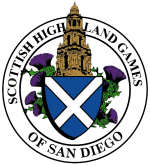Bruce’s Cave
Lace up your walking boots and pack a lunch for a visit to Robert the Bruce’s cave, which is up a steep path above Kirtle Water, near Kirkpatrick Flemming. Legend says that Robert the Bruce hid from the English armies within these gloomy walls, and watched a spider repeatedly attempting to spin a web. This inspired Bruce to continue the struggle for Scottish independence.
Caerlaverock Castle
This is one of the most attractive and interesting castles in Scotland, and is utterly unique in being triangular in shape. With a moat, strong walls and formidable towers it is the epitome of a medieval stronghold. In 1314 Robert the Bruce ordered that it should be destroyed to prevent it being used by invading English armies. Thankfully, it has been rebuilt several times since then and you can enjoy its historical charms today.
Dumfries
This ancient town has had a long and turbulent history. On the death of Alexander III in the late 13th century, two Comyns, the Earl of Buchan and Lord of Badenoch, were involved in the struggles to win the throne, leading to their deaths at the hands of Robert the Bruce in 1306. This took place in the Church of the Minorite Friars in Dumfries. A plaque marks the location of the original site in Castle Street.
Lochmaben
This town near Dumfries is reputed to be the birthplace of Robert the Bruce. You can admire a striking statue of Bruce and nearby are the remains of the two Lochmaben castles. Set in a nature reserve, the oldest remains were built by the Bruce Clan and the second was built by Edward I of England after he captured and dismantled the first castle.
Melrose Abbey
‘The Good Sir James’, founder of the Black Douglasses, was killed in battle in Spain, while he was on a mission to take a casket containing King Robert the Bruce’s heart to be buried in the Holy Land. Both the body of James and Robert the Bruce’s heart were recovered and it is here in Melrose Abbey that the heart is interred.
Edinburgh
You’ll be spoilt for things to do and places to visit in Scotland’s magnificent historic capital. The National Museum of Scotland on Chambers Street is a good place to start learning about Scotland’s fascinating history. Other attractions in Edinburgh worth visiting include the Scottish Genealogical Society library, the Palace of Holyrood House and Scottish Parliament building.
Edinburgh Castle was captured by the English during the Wars of Independence. Robert the Bruce’s nephew, Thomas Randolph, daringly recaptured it by climbing its steep and craggy sides under the cover of darkness. Have a good look at the sheer cliffs he and his men climbed – they were certainly very brave! In 1329 the city was given a Royal Charter by Robert the Bruce.
Stirling
Standing proud on its crag and dominating the landscape all around is Stirling Castle, a favoured royal retreat and the childhood home of Mary Queen of Scots. While you’re here you must visit the very poignant site of the Battle of Bannockburn. Following the vanquishing of his rivals in Dumfries, Robert the Bruce was crowned King of Scotland and began a long and arduous campaign to secure his title, finally achieving success at this battle in 1314. He then set about rebuilding the Scottish nation.
Clackmannan
Want to venture off the beaten tourist track? Head to quiet Clackmannan, a few miles to the east of Stirling. Clackmannan is a historical town home to Mercat Cross, Tolbooth and Clackmannan Tower, a magnificent five storey building dating back to the 1300s. Thomas Bruce was given lands here by King Robert II in recognition of his rising against the English in 1334.
Dunfermline
If there is an afterlife, Robert the Bruce can’t be too pleased that his body was buried in Dunfermline Abbey in 1329 but his heart lies in Melrose! Still, at least his bones are in good company – Dunfermline Palace & Abbey date back to the 11th century and the abbey was the last resting place for many Scottish monarchs.
Inverness
Welcome to the capital of the Scottish Highlands. Relax and enjoy the Highland hospitality of Inverness and recharge your batteries – you have a lot of fascinating sights to discover. For a truly atmospheric experience, make the short journey to the battleground of Culloden where, in April 1746, Bonnie Prince Charlie’s Jacobite Rebellion was crushed by government forces. Members of the Bruce Clan came to live in this more northern part of Scotland and wrote their names large in the books of Scottish history.
Kinloss
In 1597, Sir Edward Bruce was made Commendator of Kinloss Abbey, located 3 miles east of Forres and founded in 1150 by King David I. It went on to become one of the largest and wealthiest religious houses in Scotland, and in 1312 it received salmon fishing rights on the River Findhorn from Robert the Bruce. Later, in 1633, the Bruce Clan acquired the Earldom of Elgin, a few miles on to the east. In Elgin Museum you can walk back through 1,000 years of Scottish history, and learn the story of the preservation of the Elgin Marbles by a more recent Earl of Elgin.
(source VisitScotland.com)
